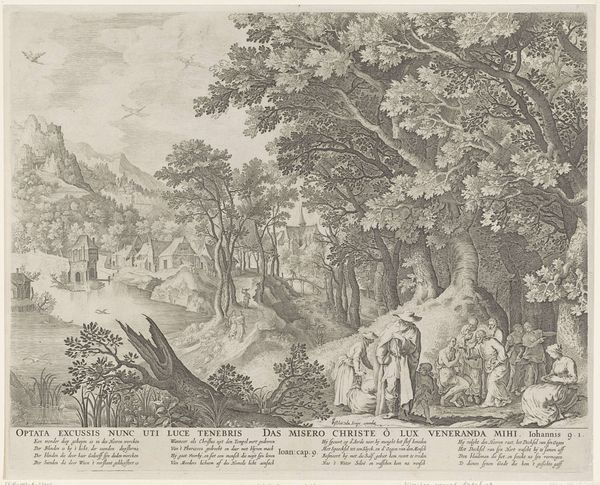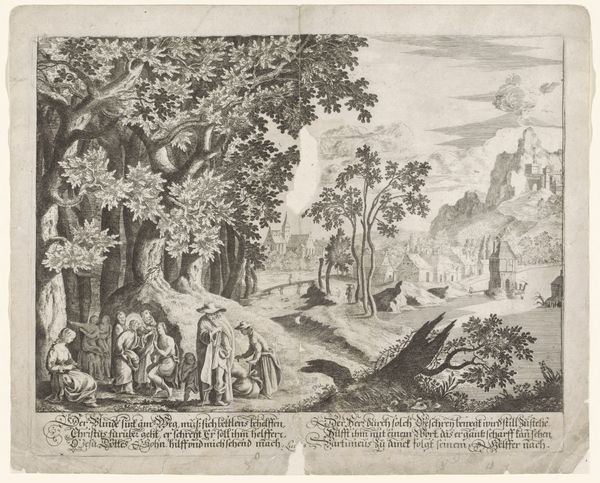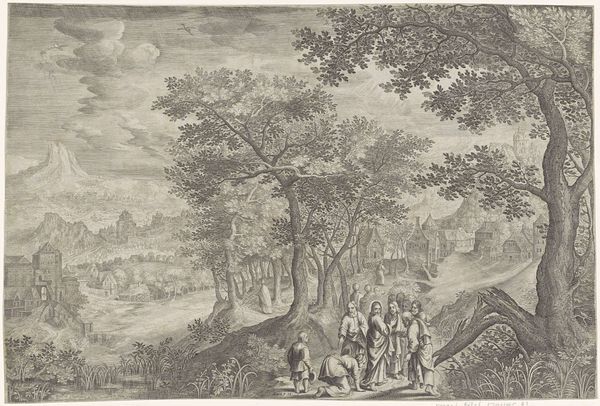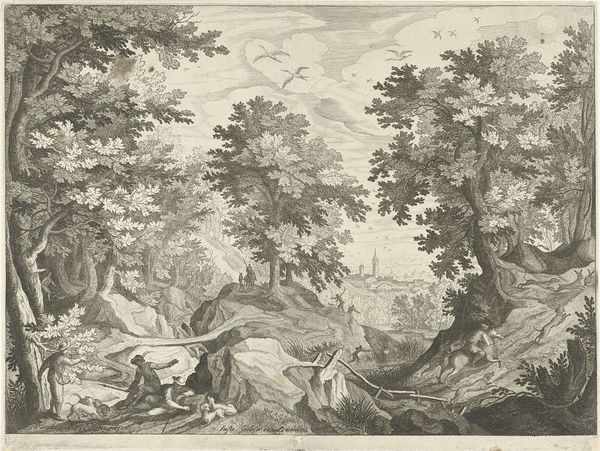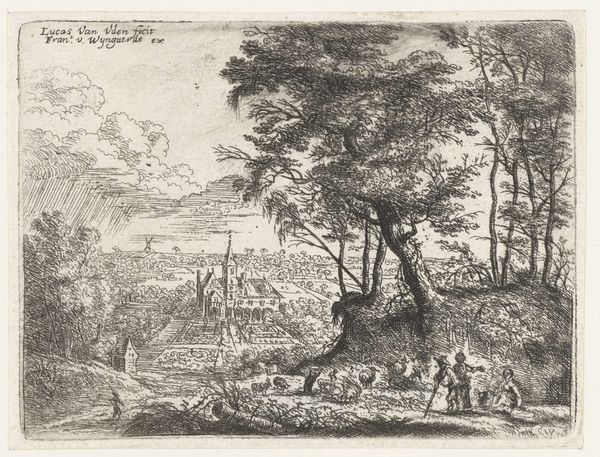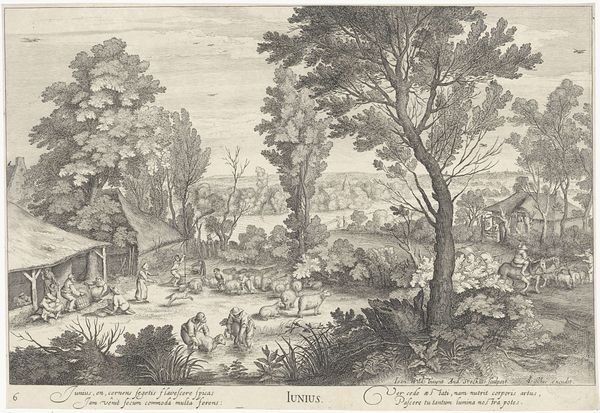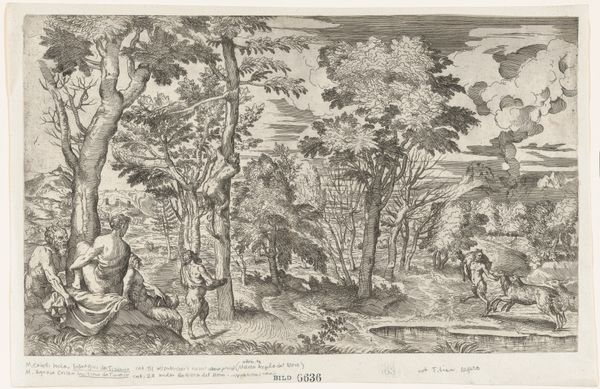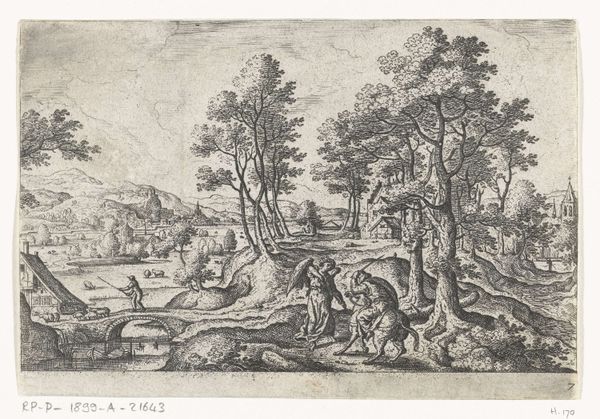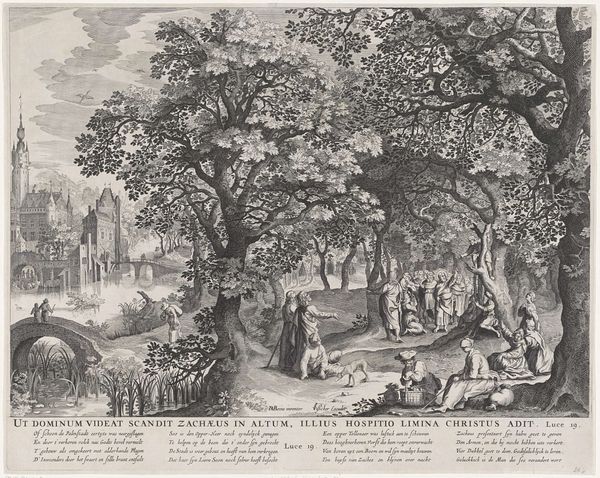
Landschap met de doop van de Etiopische kamerling door Filippus Possibly 1630 - 1702
0:00
0:00
anonymous
Rijksmuseum
print, engraving
#
narrative-art
#
baroque
# print
#
old engraving style
#
landscape
#
figuration
#
line
#
history-painting
#
engraving
Dimensions: height 413 mm, width 520 mm
Copyright: Rijks Museum: Open Domain
Editor: Here we have an engraving, "Landscape with the Baptism of the Ethiopian Eunuch by Philip," dating possibly from 1630 to 1702. It’s by an anonymous artist and held at the Rijksmuseum. What strikes me is how the detailed landscape almost dwarfs the figures enacting the baptism. What do you see in this piece? Curator: The choice to emphasize the landscape over the figures raises interesting questions about power dynamics and the context of conversion. The exoticized landscape becomes a stage upon which the narrative of the "dark" Ethiopian being "cleansed" of color plays out. How do we interpret the relationship between the colonizer and the colonized when framed within this seemingly benign religious scene? Editor: So, it's not just a simple depiction of a biblical story, but it reflects a colonialist perspective? Curator: Precisely. The "washing away" of the Ethiopian’s dark skin is symbolically potent. Consider how this narrative was weaponized during the period this engraving was produced to justify racial hierarchies and the enslavement of African people. Do you think this image, consciously or unconsciously, participates in that power dynamic? Editor: I suppose it does. I hadn't thought of it that way before. The text at the bottom now seems more charged with that knowledge. Curator: Yes, consider how the language used in the inscription, describing the Ethiopian's skin, connects to broader discourses about race and difference in that historical moment. Recognizing that artistic production is embedded in socio-political realities, like the early formation of racialized thinking, is essential for understanding art's complexities. Editor: This has definitely changed how I understand this image. It's more complex, and frankly, more disturbing than I initially realized. Curator: And hopefully, it’s opened up new avenues of inquiry for your artistic studies. Understanding historical context allows us to critique and challenge, rather than simply accept, the narratives presented.
Comments
No comments
Be the first to comment and join the conversation on the ultimate creative platform.
